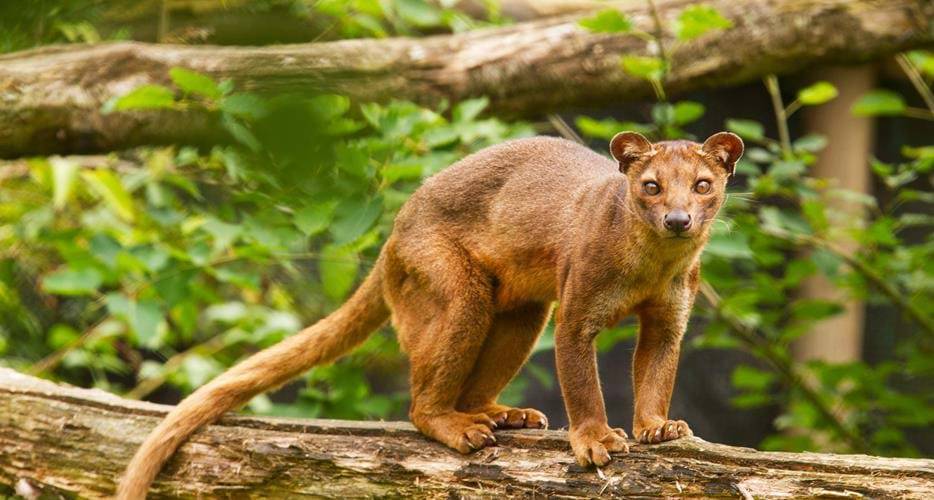The fossa, an enigmatic and lesser-known creature, is a carnivorous mammal native to Madagascar. Despite its relatively low profile, this unique creature possesses several intriguing characteristics that set it apart from other animals. Here are five fascinating facts about the fossa:
**1. **Distinctive Appearance and Adaptations: The fossa (Cryptoprocta ferox) is the largest carnivorous mammal on Madagascar and boasts a slender, elongated body, measuring up to 6 feet in length, including its bushy tail. Its appearance is a blend of feline and canine features, with retractable claws like a cat and a dog-like snout. This unique combination of traits reflects its adaptability to the diverse habitats of Madagascar, including forests and grasslands.
2. Arboreal Acrobatics: The fossa is an agile climber, often seen ascending trees with remarkable ease. Its semi-retractable claws provide a strong grip on tree bark, aiding in both climbing and hunting. This adeptness in the trees allows the fossa to hunt lemurs, one of its primary prey species, by stealthily traversing through the canopy.
3. Solitary Nocturnal Hunter: The fossa is primarily a solitary and nocturnal predator, preferring to hunt under the cover of darkness. It employs a stealthy approach, utilizing its keen senses of sight, smell, and hearing to locate and capture prey. The fossa's diet is diverse, encompassing lemurs, small mammals, birds, and reptiles.
4. Matriarchal Social Structure: While the fossa is often associated with a solitary lifestyle, females exhibit a unique matriarchal social structure. Female fossas dominate their male counterparts, with larger females asserting their authority over smaller males. This dynamic has led to a distinct pattern of sexual dimorphism, where females can be up to 50% larger than males.
5. Conservation Concerns: The fossa's population is at risk due to habitat loss and fragmentation caused by deforestation and human activities. Their reliance on intact forests and the decline of their prey species, such as lemurs, further exacerbate conservation concerns. Efforts to protect the fossa involve promoting habitat preservation, conducting research, and raising awareness about the importance of this species in maintaining Madagascar's ecological balance.
In conclusion, the fossa's distinctive appearance, arboreal prowess, solitary hunting habits, matriarchal social structure, and conservation challenges make it a truly captivating and lesser-known creature. As we continue to study and appreciate the wonders of Madagascar's unique biodiversity, it's important to recognize the importance of protecting species like the fossa to maintain the ecological harmony of this remarkable island.


